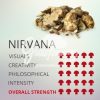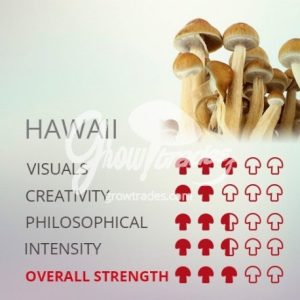Albino a+ \ Albino a+ Mushroom \ Mushroom albinism
albino a+ is a name often used in mushroom-community circles to refer to a pale or albino variant of a well-known species. In this article we’ll explore what that name means in a scientific and historical sense, discuss how the variant is understood in taxonomy and culture, and place it in the wider context of legal and health considerations. This is an educational guide — it does not give instructions for handling, cultivating, buying, or using any controlled substances. Instead, it focuses on biology, research, safety, and legal information, plus legal alternatives and wellness products like Sol Drop supplement that you can find at our shop: https://dose-lan.com/.
What “albino a+” means: a simple introduction
Many common names for organisms grow out of hobbyist and cultural use rather than formal science. Albino A+ is one such name. It tends to describe a pale or white-colored variant of a species, recognized by hobbyists and collectors. In many cases, these names reflect visual traits (like reduced pigmentation) rather than formal taxonomic differences. Scientists typically classify organisms using Latin binomials (genus and species) and, when needed, formally describe subspecies or varieties. Common names like “albino a+” are best treated as descriptive labels used in community contexts rather than strict scientific terms.
Biology and taxonomy: the basics
To understand any variant name, it helps to know some biology basics.
-
Species vs. variant: A species is a formal biological classification. A “variant” or “morph” refers to a visible difference within a species (color, size, shape) that doesn’t necessarily mean a new species.
-
Albinism: In biology, albinism refers to reduced or absent pigment production. This may be caused by genetic changes that affect pigment synthesis. In many organisms, albino forms appear lighter or white compared to their typical counterparts.
-
Importance of scientific names: Scientists use Latin names to avoid confusion. If you see a name like “Albino A+” it’s useful to locate the formal species name behind it for reliable research and identification.
This article will stay at a non-technical level but encourage readers to consult peer-reviewed sources for detailed biology.
Visual traits and how scientists describe them (non-actionable)
When scientists or naturalists describe a pale variant they typically record features such as cap color, gill attachment, spore color, and habitat. That lets other researchers or museum curators identify specimens under standard terms.
Example descriptive points (for identification in museum/academic contexts only):
-
cap color and texture (e.g., pale, smooth)
-
gill spacing and color (e.g., close, pale)
-
spore print color (an important taxonomic trait for many fungi)
-
habitat (type of wood, soil, climate)
-
microscopic features (spore size and shape)
History and cultural context
Names like “Albino A+” often arise in online forums, collector groups, and historical accounts. Enthusiast communities sometimes create and share names for visually striking variants. Those names can become widely used inside those communities, even when they aren’t formally described in scientific literature.
From a cultural point of view, these names reflect curiosity, aesthetic interest, and sometimes historical anecdotes. They have a place in ethnomycology (the study of human–fungus relationships) as part of how people talk about and value different mushroom forms.
Research, science, and what’s known
Scientific research on fungi is broad: it includes taxonomy, ecology, pharmacology, and conservation. When a particular visual variant is of legitimate scientific interest (for example, if it suggests a distinct genetic lineage), researchers may publish formal descriptions in peer-reviewed journals. Otherwise, many variants remain documented mainly in hobbyist collections and online records.
If you want rigorous, peer-reviewed information, good sources include scholarly databases like PubMed or university mycology departments. These resources can provide research on fungal genetics, pigment biosynthesis, taxonomy, and ecological roles.
(For general reference on fungal taxonomy and identification, trusted sources include university mycology guides and government natural resources pages — e.g., pages from botanical or agricultural departments. For human health and safety, refer to national health institutes.)
Legal and public-health context (high level)
Laws about fungi vary by country and by species. Many mushroom species are entirely legal when studied in herbariums, museums, or the wild. Others may contain compounds that are regulated or prohibited in some regions. Important points:
-
Local laws matter: Legal status depends on jurisdiction. What is legal in one country may be controlled in another. Always consult official government resources or legal counsel for precise information.
-
Research vs. use: Academic or museum study of specimens is often permitted under regulated frameworks. Recreational use and production of certain controlled substances may be prohibited.
-
Public health focus: Health agencies recommend safe, legal paths for wellness and research. If there are safety concerns related to any organism, public-health guidance should be the primary source.
For up-to-date legal status, consult your country’s official government or health websites.
Harm reduction & safety (non-actionable, high-level guidance)
If your interest is academic or historical, that’s one thing. If the topic is associated with substances that are regulated, it’s essential to emphasize health, safety, and legality. Harm-reduction guidance at a high level includes:
-
Rely on trusted medical sources for any health concerns.
-
Seek professional medical or legal advice rather than community anecdotes.
-
Avoid engaging in activities that are illegal in your jurisdiction.
-
If someone experiences an adverse reaction to an unknown substance, contact emergency medical services or poison control immediately.
This section intentionally avoids procedural or enabling details; its aim is to point readers toward safe, legal, and medically appropriate actions.
Scientific value and museum/herbarium practice
Variants like “albino” forms can have value for scientific collections. Herbaria and fungal collections may preserve specimens for future genetic study, biodiversity records, and conservation. Proper museum practices include:
-
Accurate labeling with collection data (date, location, habitat)
-
Preservation following institutional protocols
-
Depositing specimens in recognized collections for researchers to access
These practices support biodiversity science, conservation, and future research without promoting non-legal behavior.
Comparison to legal medicinal mushrooms and wellness products
For people looking for legal, health-focused ways to support brain health, immunity, or mood, there are many legal options. Examples include lion’s mane (for cognition-related interest), shiitake (nutritional and immune support), and evidence-based supplements. One such product people ask about is Sol Drop supplement, a legal wellness product that aims to support mood and energy. If you’re building a legal wellness offering or content hub, it’s useful to compare scientific evidence and transparency in ingredient sourcing.
Table – Legal alternatives & their general roles (non-medical summary)
| Item | Typical Use / Interest | Evidence summary (general) |
|---|---|---|
| Lion’s mane (Hericium erinaceus) | Cognitive support, nerve health interest | Emerging research on neurotrophic factors; human trials limited but promising |
| Shiitake (Lentinula edodes) | Nutrition, immune support | Rich in nutrients and polysaccharides; used historically and studied for immune effects |
| Sol Drop supplement (example product) | Mood, energy, daily wellness (legal supplement) | Depends on formulation; look for transparent ingredient lists and third-party testing |
| Multivitamin / Omega-3 supplements | General nutrient support | Well-established roles in nutrition when deficiencies exist |
If you sell legal wellness products, linking to your shop (https://dose-lan.com/) and presenting transparent ingredient lists, third-party lab testing, and clear dosing guidance supports both users and search engines.
How to write about “albino a+” safely and ethically (for site owners and bloggers)
If you plan to create public content about specialist or sensitive topics such as visually distinct fungal variants, follow these principles:
-
Use neutral, factual language. Avoid language that encourages illegal behavior or glamorizes risky acts.
-
Cite authoritative sources. Link to university mycology pages, government health sites, or peer-reviewed literature.
-
Avoid procedural details. Do not provide step-by-step instructions for activities that might be illegal or unsafe.
-
Include context and legal disclaimers. Remind readers to check local law and consult professionals.
-
Offer legal alternatives. Give readers safe options (legal supplements, reputable mushroom education, museum visits).
-
Provide CTAs to legal products or educational resources. For example, your site can promote legal wellness items such as Sol Drop supplement and educational posts.
Internal linking examples for SEO and user experience (adapt to your site structure):
-
Link to product pages: “See our legally sold wellness blends in the shop section.”
-
Link to educational posts: “Read our guide on legal mushroom species and their health benefits.”
-
Link to FAQs and disclaimers: “Visit our FAQ on legal status and safety.”
Suggested external (non-competing) resources to cite
To build credibility and help readers find reliable information, link to reputable resources such as:
-
National health institutes (for general health and supplement information)
-
University mycology departments or extension services (for taxonomy and biodiversity)
-
Peer-reviewed literature via PubMed (for scientific studies)
-
Governmental biodiversity or conservation sites (for species records and regulations)
Avoid linking to sites that facilitate illegal activity. Instead, prioritize academic and government sources.
SEO tips for ranking an informational page about “albino a+”
If you want the page to rank on Google, keep these best practices in mind:
-
Start with the keyword: Begin your opening line with “albino a+” (as done here) so search engines see the main topic right away.
-
Use H1 and H2 headings: Organize content under clear headings with related keywords used naturally.
-
Provide value and depth: Long, well-structured articles that answer common questions tend to rank better. Keep the language simple and friendly.
-
Cite high-quality external sources: Linking to reputable sites (NIH, universities) builds trust.
-
Add internal links: Link to related content and legal product pages on your site (e.g., Sol Drop supplement in your shop).
-
Optimize meta tags and images: Use descriptive alt text and a concise meta description beginning with the main keyword.
-
Avoid disallowed content: Don’t include instructions for illegal activities—this protects your site from search penalties and legal risk.
Example call to action and legal shop mention
If you’d like to offer readers safe alternatives, a natural CTA might read:
Curious about legal ways to support mood and focus? Explore our legally sold wellness blends — including Sol Drop supplement — in our shop at https://dose-lan.com/. Each product page lists ingredients, third-party test results (when available), and safe usage guidance. Subscribe to our newsletter for updates and science-backed wellness tips.
Table: Non-actionable properties & research notes (safe, informational)
| Property | Information (non-actionable) |
|---|---|
| Common name usage | “Albino A+” — informal, community-derived name for a pale variant |
| Scientific classification | Variants are best referenced by formal species name in scientific literature |
| Visual traits | Pale or reduced pigmentation compared to typical specimens (descriptive only) |
| Taxonomic relevance | Visual variants may or may not indicate genetic differences; formal study required |
| Research interest | Genetic, pigment biosynthesis, and taxonomic studies may reference pale morphs |
| Legal note | Legal status depends on species and jurisdiction; consult government sources |
| Health & safety | Do not assume safety based on appearance; consult medical sources for health concerns |
| Museum value | Specimens of unusual variants can be valuable for scientific collections and biodiversity records |
Frequently Asked Questions (FAQ)
Q: Is the name “albino a+” a scientific term?
A: No. It’s usually an informal, community name. For scientific work, use the formal species name and peer-reviewed descriptions.
Q: Can I legally study pale fungal specimens?
A: Many forms of academic study are legal, but check local laws and institutional policies, especially if specimens are of species that carry regulated compounds.
Q: Where can I learn more about legal mushroom species?
A: University extension services, botanical gardens, and government natural-resource pages are good places to start.
Q: Are there legal products that support mood and energy?
A: Yes. Legal supplements like Sol Drop supplement and various mushroom-derived products (lion’s mane, shiitake) are available. See product pages for transparency and third-party testing.
Closing thoughts
The phrase albino a+ reflects how people name and talk about visually distinct organisms in community spaces. For serious study, it’s important to rely on scientific names, established research, and trustworthy institutions. If your interest is academic or historical, museum collections and peer-reviewed literature are excellent starting points. If your interest is wellness, consider legal, well-studied alternatives and transparent products — for example, Sol Drop supplement — available via our shop at https://dose-lan.com/.













Reviews
There are no reviews yet.